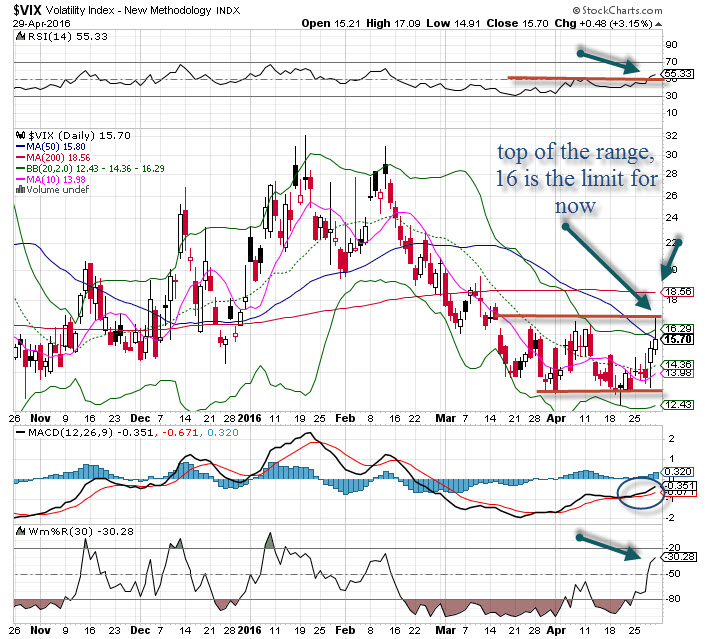The VIX has been quite low for a while, and as such we have noticed the extreme market volatility of early this year has been zapped away. However, last week saw some volatility start to come back with a big jolt on Thursday and then some follow-through to end the week. A market under distribution as we have seen of late can bring the volatility back in a big way, and it could be a game changer.
However, the context of volatility must be defined carefully. When one looks at the VIX cash indicator and sees a number like 15%, this is simply identifying how much expectations the market has for movements over the next 30 days. In this case, the implied daily volatility is less than 1% a day and about 4.4% for the month.
Hence, as the average price of VIX for the last few months has been well under 18% we have seen very little net movement on some days. In fact, there have been trading sessions where the SPX 500 moved less than .5% from high to low! That is narrow action and offers very little for traders to feast on. It’s no wonder that in times like this we see very little interest or volume.
So, given that VIX is so low and probably represents high complacency, we would consider options cheap and hence buying protection would be the way to go. Yes and no. We have to look at the futures curve as well to see how volatility is being price 2-4 months out, and if it’s very expensive relative to the cash we are certainly paying a higher price for longer term protection. See the link below, and you see the market is pricing in volatility above 20% in late summer into early fall.
http://www.tradingvolatility.net/p/datasourceurldocs.html
Some prefer to use volatility ETNs such as the VXX, but this works best when the futures curve is flatter and inverting as we saw in January and February. The best way to protect is to purchase puts on indices such as SPY, QQQ, IWM or DIA, which are priced daily and offer some great insurance in case the market goes into a tailspin.





